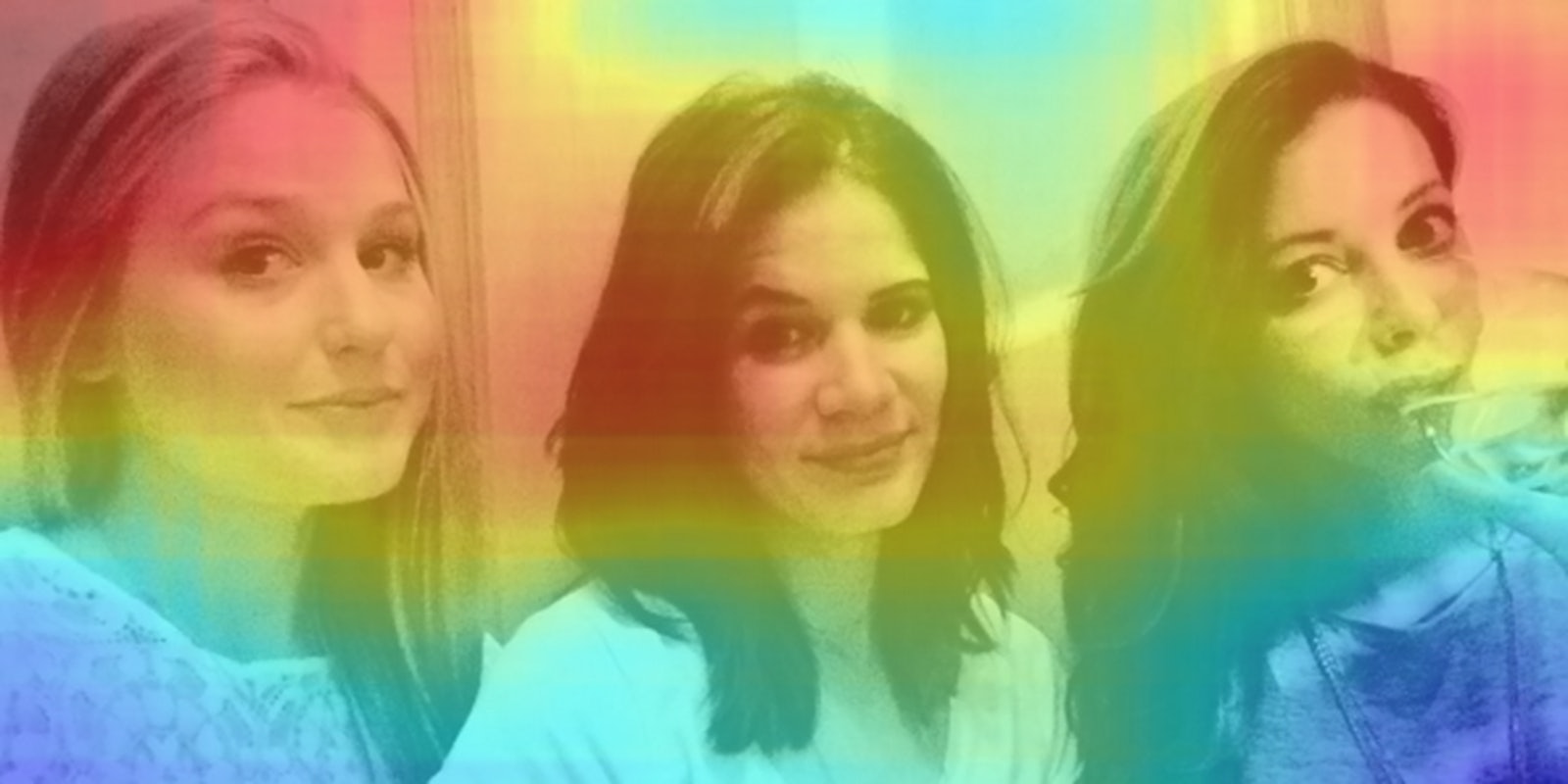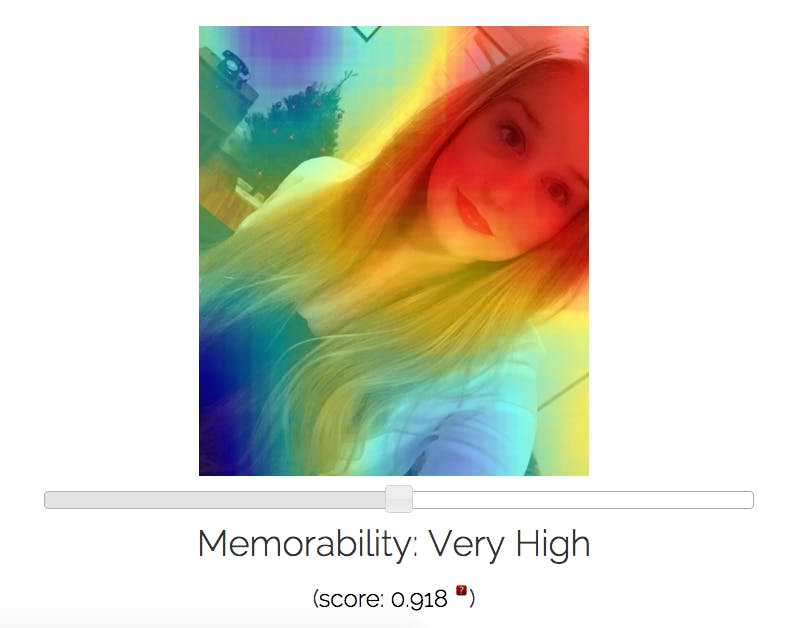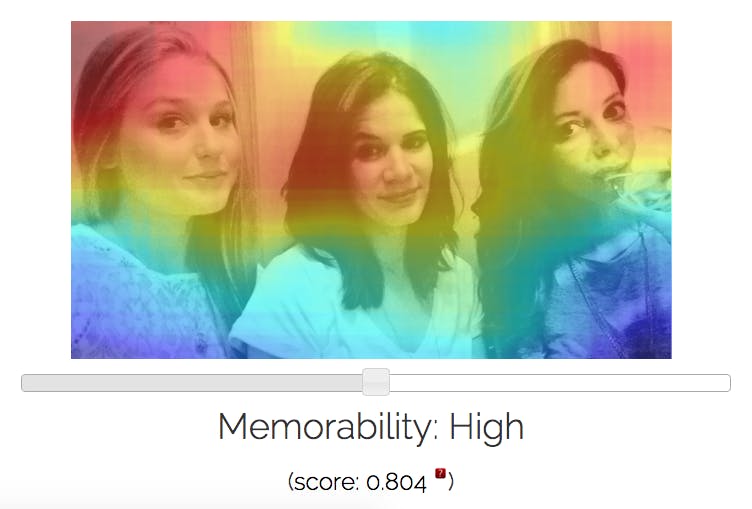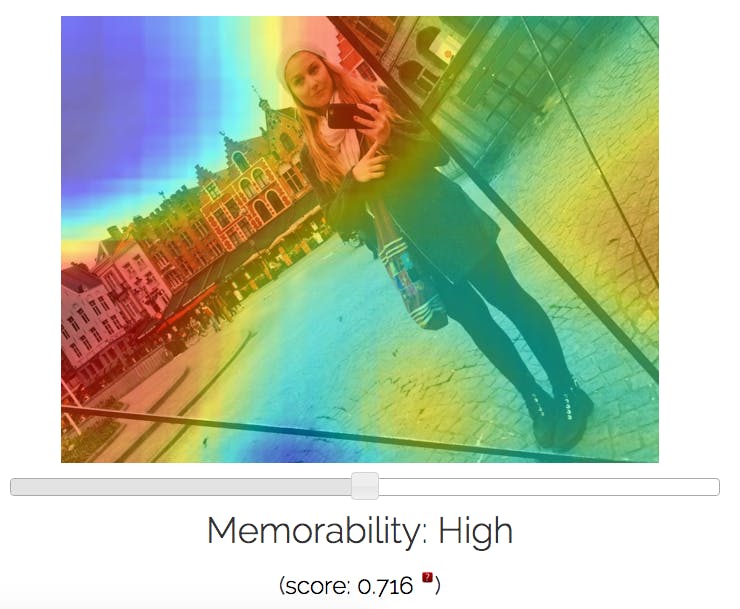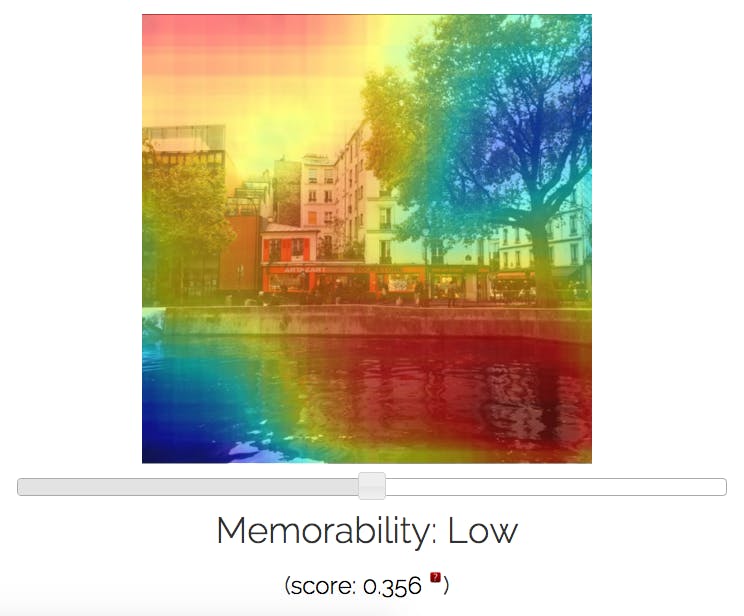Just how memorable are my Instagram photos? I let a computer be the judge of that, and discovered that selfies really are the images people will remember.
A deep learning program developed by researchers at MIT’s Computer Science and Artificial Intelligence Laboratory is the first artificial intelligence to accurately classify the memorability of images on a human level. The project is called Large-scale Image Memorability, or LaMem. The machine learning program can analyze an image and provide a “memorability scale,” or an estimate of how many people will remember it after viewing.
MIT researches used layered convolutional neural networks (CNNs), artificial neural networks often used in image recognition and natural language processing. One part of the system analyzes the content of the image while the other gauges its memorability based on human memory scores real people have given photos in the past. The system utilizes the data from 60,000 analyzed images.
“Everything about an image influences its memorability—the set of objects or humans in the image, the way they are composed or placed, their distance to the camera and so on,” Aditya Khlosa, lead researcher, told the Daily Dot in an email. “Memorability is a complex cognitive process that is hard to describe simply. The algorithm we use to learn this is powerful for identifying patterns in data, but it is difficult to understand exactly what patterns the algorithm has identified.”
The artificial intelligence is still not totally accurate, however. Khlosa told Motherboard that the network wasn’t trained to recognize blank images, so the memorability score of solid colors is incorrect.
You can test out the program for yourself. It provides a score and heat map based on which parts of each photo positively and negatively impact its memorability.
According to Kholsa, the computer predicts memorability better than people. Researchers also found that faces are more memorable, while images of landscapes less so.
“The most surprising thing we discovered was the extent to which we could predict memorability using deep learning algorithms, i.e., achieving near human-level consistency,” Khlosa said. “This is especially surprising because if humans are asked to tell us what images they think they will remember, they have little to no correlation with what they actually do remember.”
If you want to make your Instagram, Facebook, or even dating site photos more memorable to friends or potential partners, this study suggests you should put your selfies front and center.
To test out the theory, I analyzed a number of photos off my Instagram account to see if the artificial intelligence could help me figure out which photos were the most memorable, helping to determine what types of photos I should share more frequently on my account.
Curiously, the photos determined to be least memorable by the analysis also coincided with fewer likes on Instagram, and the higher the memorability ranking, the more likes the photo had. While my unique experience is not a scientific analysis, it does show that my followers, at least, also prefer selfies to landscapes, and that in my case, memorability is positively correlated to likability.
The photo that scored the highest with LaMem’s memory analysis was a recent photo I took before a holiday party. It also happens to be the second most-liked photo on my Instagram account in the last few weeks. My selfie ranked “very high” with a memorability score of 0.918, meaning almost 92 out of 100 people are likely to remember it.
So what happens when I add a few friends in my selfie? According to LaMem’s technology, my group photo ranked “high,” with a score of 0.804. Still memorable, but fewer people would remember it compared to my solo photo.
Ranked even less is a picture I took of myself in a mirror that reflected an entire town square. Again, the memorability score equally matched the findings presented in the MIT study—the selfie with a landscape in the background was less memorable, with a “high” score of 0.716.
Then I removed myself entirely. I analyzed a photo I took of a favorite bookstore, situated serenely on a canal. The photo itself had just a few likes on Instagram—not even hitting the magic 11th like. Turns out the memorability was also quite low, at just 0.356.
My own testing results fall in line with what MIT has noticed as a larger trend. “It supports one of the findings in our work – the top 25% most memorable images tend to be more popular on social networks,” Khlosa explained.
The LaMem research is helpful for making your social media more memorable, but it also has some very practical applications. The researchers explain:
Understanding why certain things are memorable could lead to making systems and devices that preferentially encode or seek out this kind of information, or that store the important information that humans will certainly forget. For learning and education, new visual materials could be enhanced using the memorability maps approach, to reinforce forgettable aspects of an image while also maintaining memorable ones.
While selfies appear to be the most memorable images, they might be declining in popularity. Photo app EyeEm analyzed all the photos posted to the application this year—from a community of 15 million photographers—and found selfie shares dropped 33 percent while architecture and nature photography increased 34 and 40 percent, respectively.
“While in general, people are more memorable than most other objects, we do not know exactly what poses or expressions or make-up lead to them being more [or] less memorable,” Khlosa said. “We hope to be able to better identify more precise characteristics in the near future.”
LaMem shows us that selfies and photos of faces are something we’re less likely to forget, but the work could also go towards helping people view and consume information more efficiently. And I learned I should keep on posting more selfies—they’re the things people remember the most.
H/T Motherboard | Photo via Selena Larson

